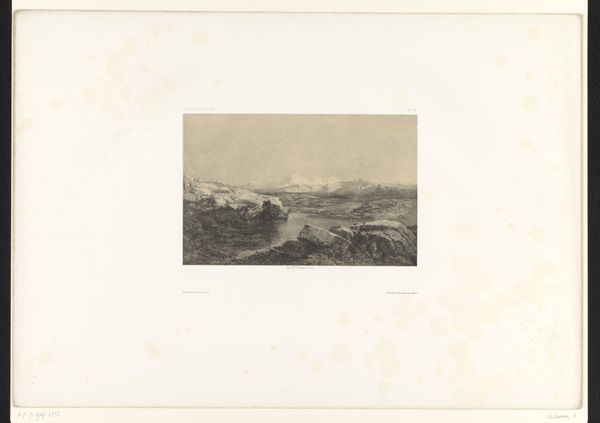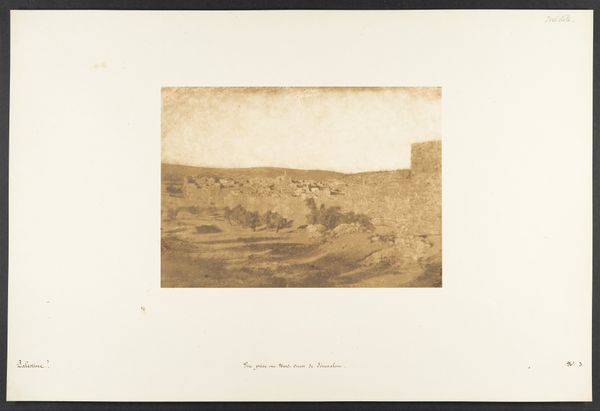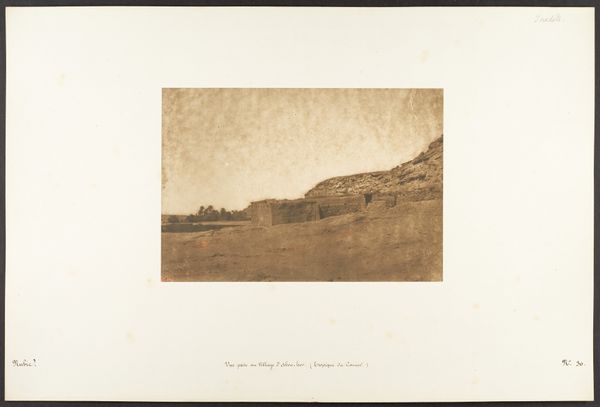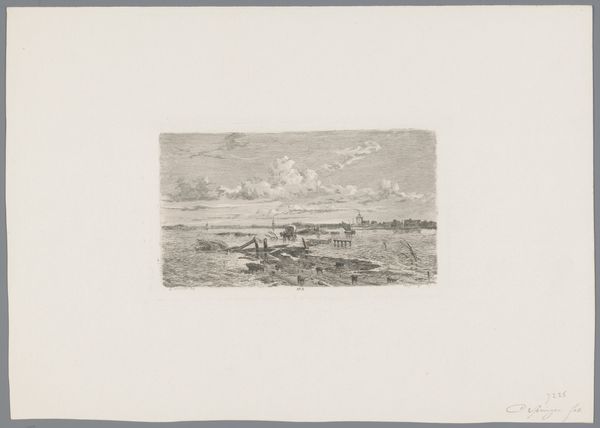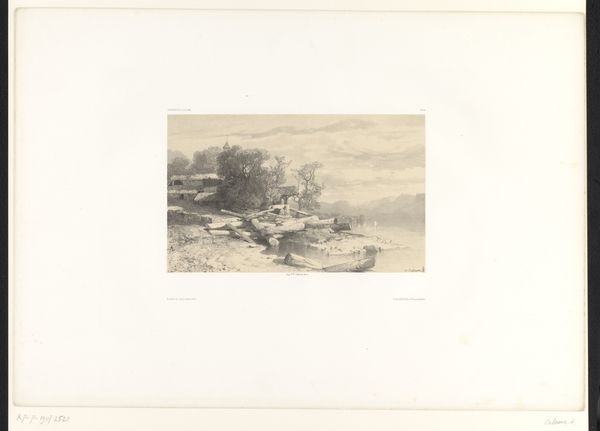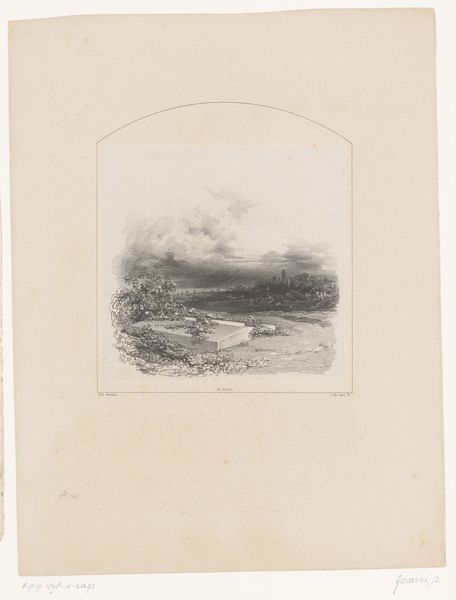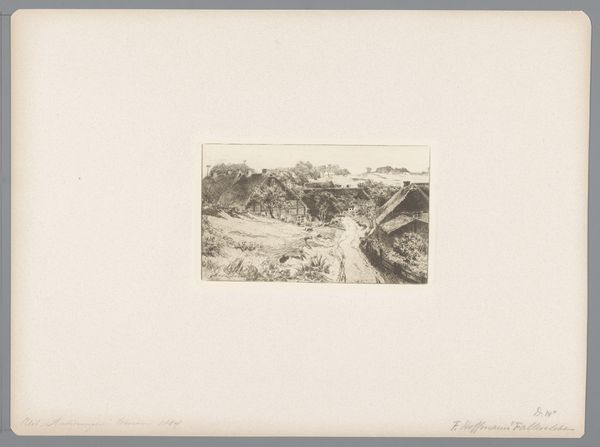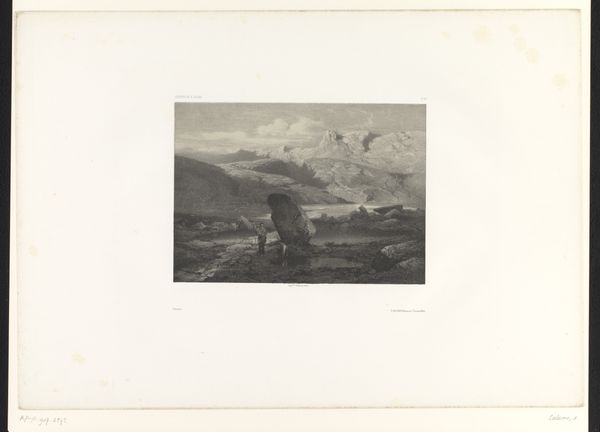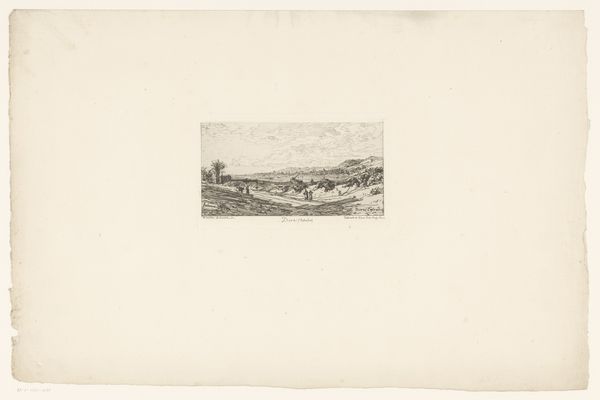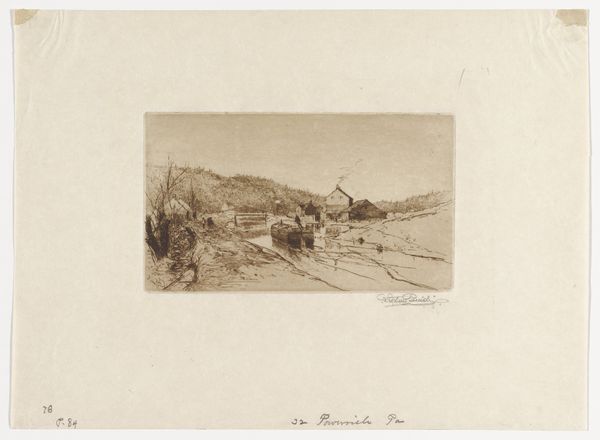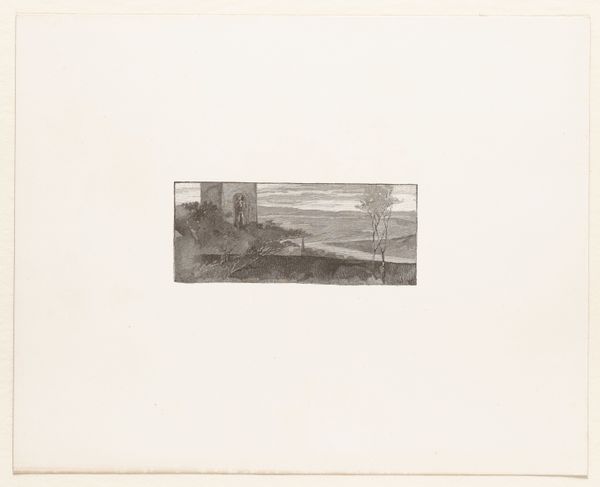
print, etching
#
narrative-art
# print
#
etching
#
landscape
#
genre-painting
#
watercolor
#
realism
Dimensions: height 102 mm, width 200 mm
Copyright: Rijks Museum: Open Domain
Curator: So here we have "Rescuers on the Beach after a Shipwreck," an etching by Franz Hoffmann-Fallersleben, created in 1887. It presents a scene of dramatic maritime rescue. Editor: Whoa, that hits you right in the gut. A stormy beach, turbulent waves—it feels incredibly tense. Look at that lone figure standing against the chaos. He seems so…isolated. Is he hopeful or defeated, you think? Curator: It’s interesting you say isolated. The print itself reflects the increasing anxieties in 19th century Germany with its fast industrialization and expanding sea power, there’s a tension between man and nature, an awareness of precariousness. It invites consideration of the socio-economic and political structures in place at the time to protect, or fail to protect, vulnerable seafarers and citizens who depend on trade for income. Editor: Oh sure, yeah, the human condition writ large or something. I suppose that makes sense given the Industrial Revolution—but for me, its more immediate. The grainy texture reminds me of old photographs capturing ephemeral moments, freezing raw emotions of loss and duty. I find it quite romantic. Curator: Romantic in the literary sense I hope, as Hoffmann-Fallersleben engages in the tradition of narrative art, capturing a slice of life. Editor: Point taken. But consider this too. There's beauty in how the light hits the wave, creating a dynamic rhythm against the bleak backdrop. It's not just about historical context or realism—it’s a moment pregnant with stories, all up for grabs. It captures something fundamentally unsettling, yet so gorgeous too! Curator: Well, Hoffmann-Fallersleben, of course, aimed to reproduce what he witnessed with scientific fidelity as part of a Realist art movement, the composition showing social progress as heroes helping, perhaps attempting to move society from shipwreck towards safety. It gives a picture into his place within Germany's political framework. Editor: Ultimately, its haunting elegance reminds me that every crisis is an opera of survival—a very wet one in this case. A beautiful print and, like many I’ve seen, speaking still to viewers more than a century later. Curator: Indeed. Its presence in this museum continues to invite these stories into our modern present.
Comments
No comments
Be the first to comment and join the conversation on the ultimate creative platform.
